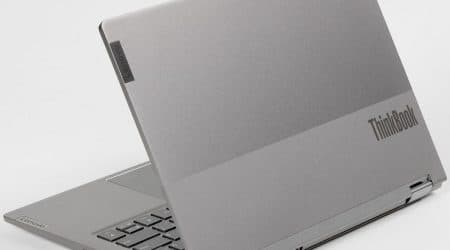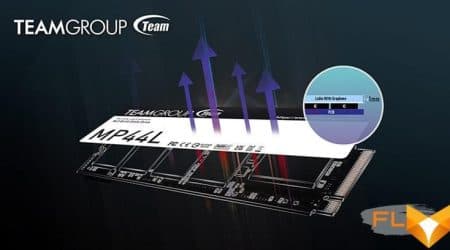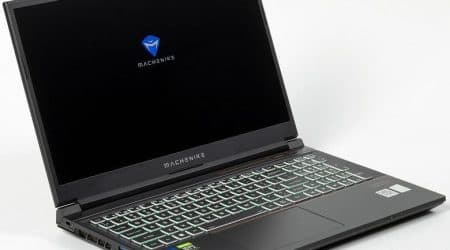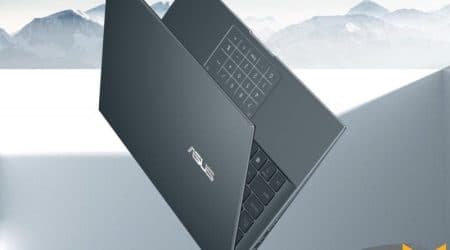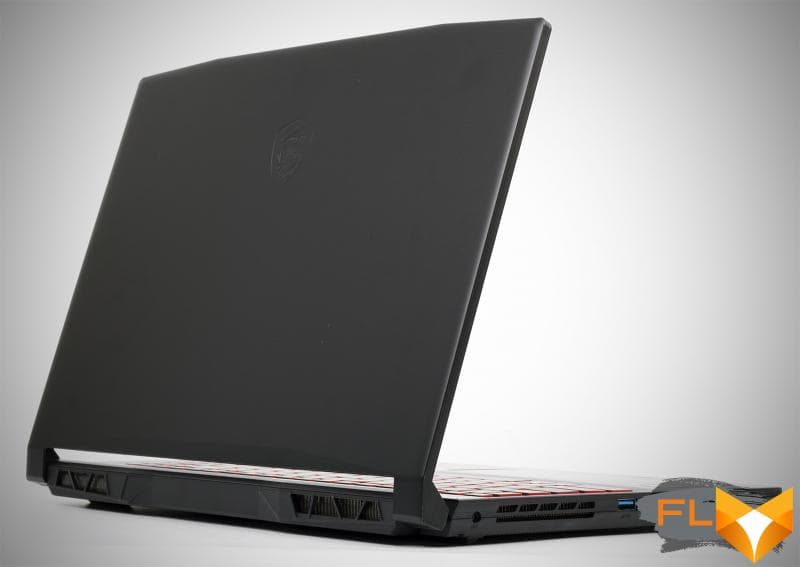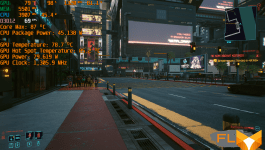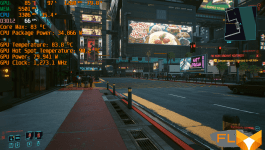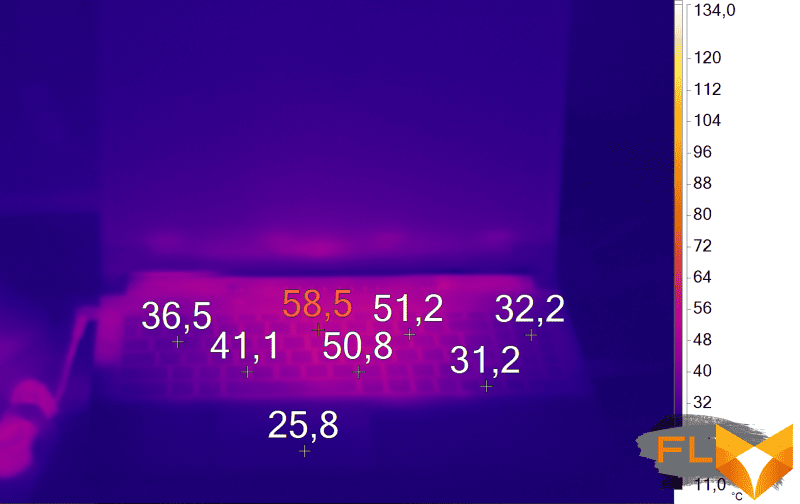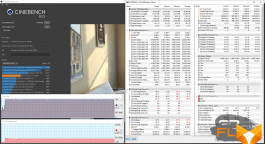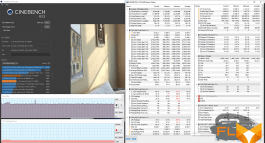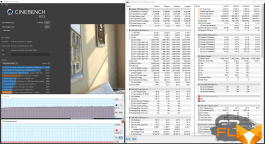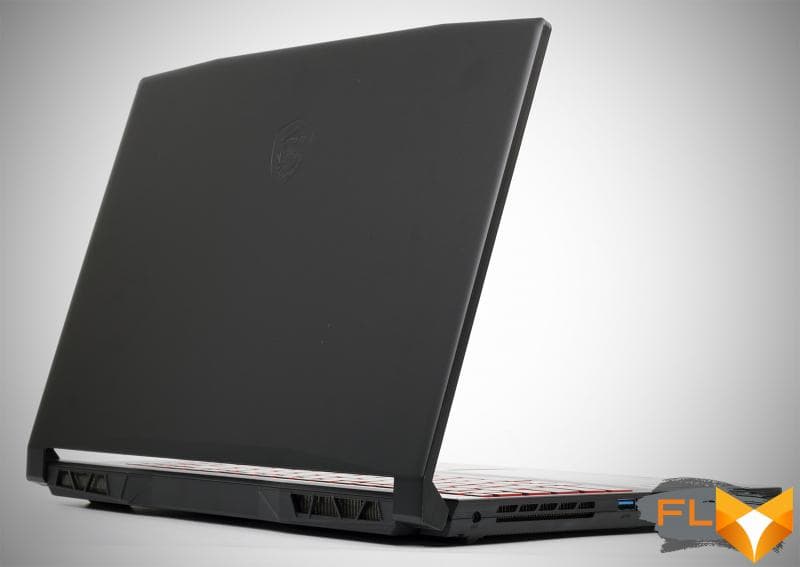


This year, gaming laptop models equipped with the mobile version of the GeForce RTX 3070 most often came to us. Apparently, the manufacturers themselves consider such assemblies to be the best solution for games in 2021. Today we will talk about the MSI Katana GF66 11UG – one of the most affordable models in its class at the moment.
MSI Katana GF66 11UG-079XRU
⇡#Specifications, equipment and software
On sale you can find several modifications of the MSI Katana GF66 11U. All Katanas use the Intel platform and 11th generation Core processors, but the GPUs in this series of laptops can be used at very different levels. So, in Katana GF66 11UG, the mobile GeForce RTX 3070 is soldered, but you can also find modifications with the GeForce RTX 3060 (11UE ), GeForce RTX 3050 Ti (11UD) and GeForce RTX 3050 (11UC). The table below shows the characteristics of the flagship modification.
| MSI Katana GF66 11UG | |
| Main Display | 15.6″, 1920 × 1080, IPS, 144Hz |
| CPU | Intel Core i7-11800H |
| Video card | NVIDIA GeForce RTX 3070 (85W with Dynamic Boost) |
| RAM | Up to 64 GB DDR4-3200 (16 GB on test model) |
| Install Drives | 2 × M.2 in PCI Express x4 3.0 / SATA 6 Gb / s mode (1 TB for the test model) |
| Interfaces | 2 × USB 3.2 Gen1 Type-A 1 x USB 2.0 Type-A 1 × USB 3.2 Gen1 Type-C 1 x 3.5mm mini jack 1 x HDMI 1 × RJ-45 |
| Built-in battery | 90 Wh |
| External power supply | 180 Вт |
| Dimensions | 359 × 259 × 25 mm |
| Laptop weight | 2.25kg |
| Operating system | Windows 10 Home |
| Warranty | 2 years |
| Recommended price | From $2300 |
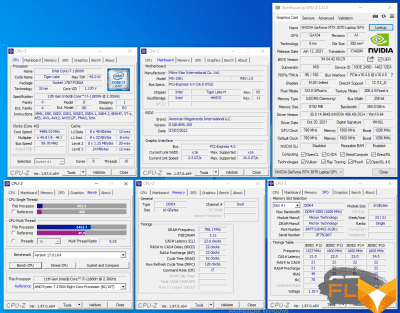 |
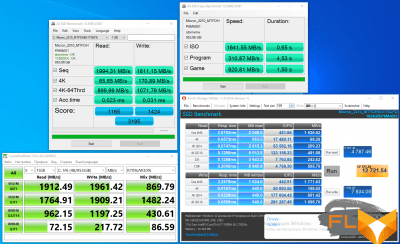 |
The most advanced version of the laptop has arrived – its full name sounds like MSI Katana GF66 11UG-079XRU. In addition to the 8-core Core i7 and GeForce RTX 3070, the laptop uses 16 GB of DDR4-3200 RAM and a 1 TB NVMe SSD. Unfortunately, at the time of this writing, I did not find this Katana assembly for sale, but I know that version 11UG-083RU (512 GB SSD, Win 10 Home x64) is asking for an average of $ 2,300. At the moment, the price of the most inexpensive laptops with the GeForce RTX 3070 starts at $ 2,200 – which is why it is claimed that the Katana GF66 11UG is one of the affordable models in its class.
The wireless connection in the MSI mobile computer is handled by the Intel Wi-Fi 6 AX201 module, which supports the Wi-Fi 6 standard. When using a 160 MHz channel, a throughput of up to 2.4 Gbps is provided.
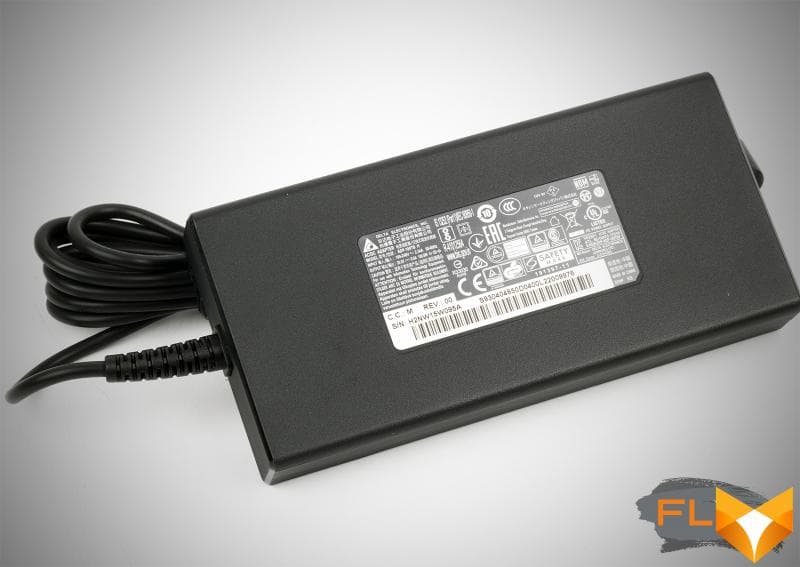
The laptop comes with an external 180W power supply. With all wires, its weight is 460 grams. The laptop does not support Power Delivery technology.
⇡#Appearance and Input Devices
The hero of today’s review is very similar to the recently tested Sword 15 A11UE. Both series of laptops were created with the participation of Tsuyoshi Nagano, a famous Japanese illustrator. They use the same hull design, platform and chassis. But the color may vary – for example, the Katana GF66 11UG is completely made in black, and the previously tested model received a black and white case.
 |
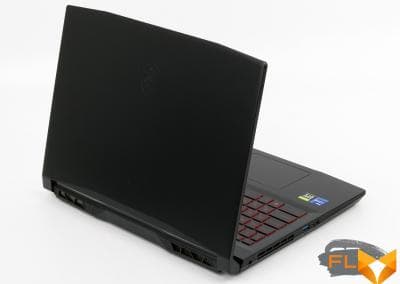 |
The body of the Katana GF66 11UG is entirely made of plastic. Overall, I like the build quality – I note that the laptop keyboard does not flex, and the area around it does not get dirty much. The thickness of the device is 25 mm – even among powerful gamebooks there are thinner models. The mass of the entire gaming system, together with the power supply, does not exceed 2.3 kg – any adult user will definitely cope with such a burden.
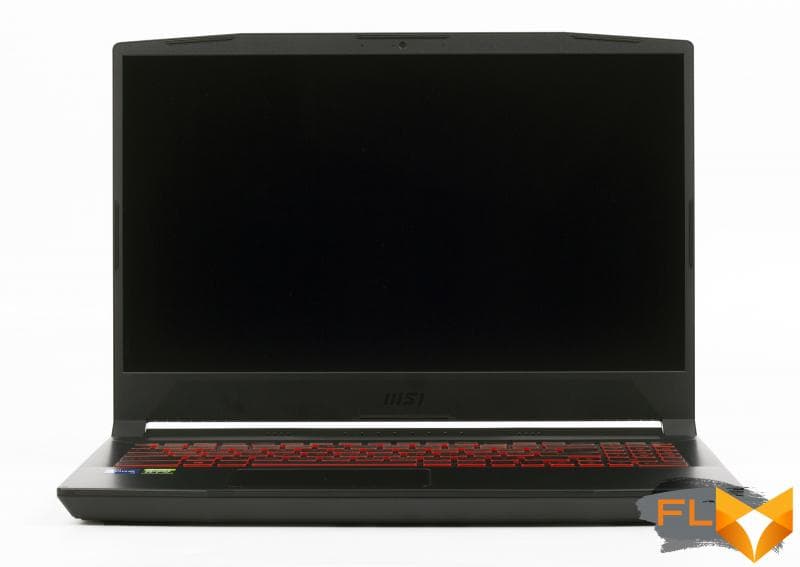
The screen bezels on the sides are quite thin – 6 mm. Thanks to this, the Katana GF66 11UG was also small in width. At the top is a webcam that can record 720p video at 30Hz. This “webcam” produces a good quality picture only in clear sunny weather or in bright artificial lighting.
The lid of the laptop can be easily opened with one hand. The design uses rather tight hinges that clearly position the display. The lid itself is light, but it does not shake if the laptop is placed on a flat and hard surface. But if you put the Katana on your knees, you will most likely encounter slight rocking of the lid during fast typing. And the lid leans back to an angle of up to 180 degrees – sometimes it turns out to be convenient.
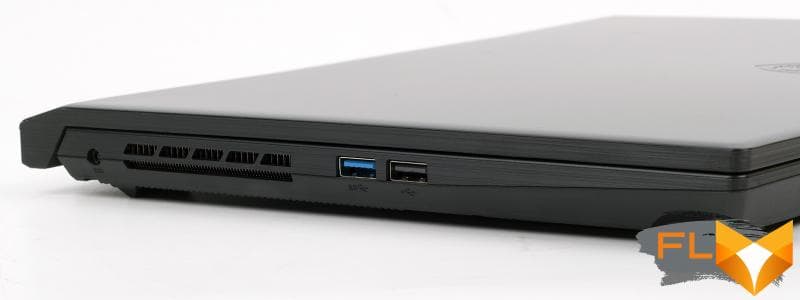
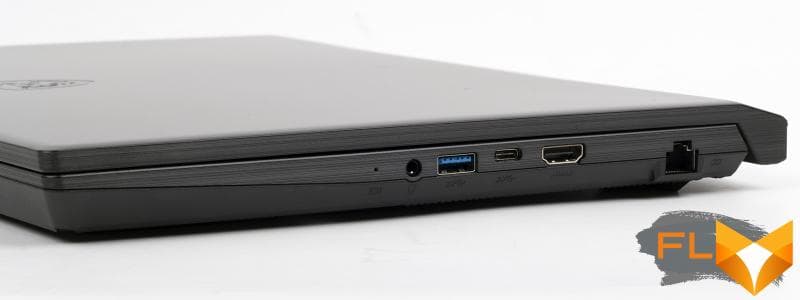
On the left side of the Katana GF66 11UG, in addition to the connector for connecting an external power supply, only USB 2.0 and USB 3.2 Gen1 ports are soldered – all A-type. On the right side of the interfaces turned out to be much more: RJ-45, HDMI output, USB 3.2 Gen1 C-type, another USB 3.2 Gen1 A-type and a 3.5 mm headset jack. In principle, such a set will be enough for the average gamer. The rest can safely grumble about this in the comments to the article.
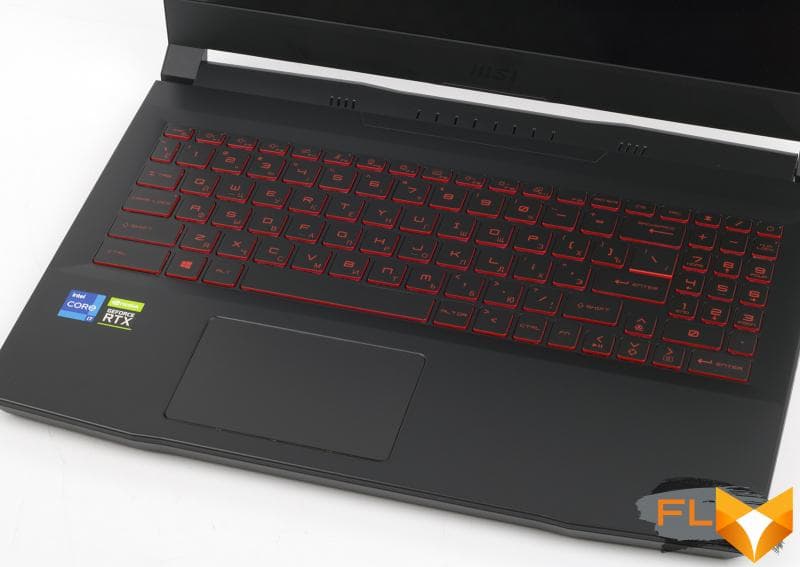
Keyboard “Katana” has a numeric keypad. Let it be small and narrow, but still it is. However, you will have to get used to some buttons: for example, the second Enter is unusually located; the power button is completely invisible; and instead of the zero key, I constantly hit the right arrow key. By the way, the manufacturer put such functions as play/stop of the media player, turning on/off the sight in the center of the screen, and activating the Cooler Boost function (the cooler fans start working at maximum speed) on the arrows.
Other buttons are large, and gamers will definitely like the large Shift and Ctrl. The key travel, according to the manufacturer, is 1.7 mm. The keyboard is pretty quiet. And the buttons are equipped with a three-level red backlight – all engraved characters and letters are highlighted. As a result, the keyboard is comfortable to use day and night.
The touchpad of the Katana GF66 11UG is small (105 × 65 mm), performs its functions properly and does not raise any complaints.
⇡#Internal design and upgrade options
The bottom panel of the laptop is quite easy to remove. The Cooler Boost 5 cooling system received two fans, three radiators (two large and one small) and six copper heat pipes of different lengths and shapes.
 |
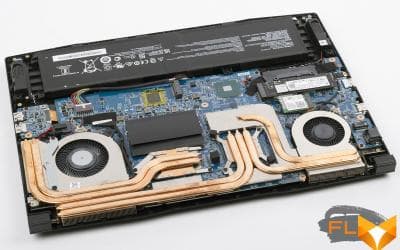 |
The cooling of the CPU and graphics can be considered conditionally separate, since a pair of heat pipes is responsible for removing heat from the Core i7. Three coppers are already engaged in cooling the GPU. Another heat pipe ensures the stable operation of the GeForce RTX 3070 binding – memory chips and power converter elements.


Katana lends itself well to upgrade. Now the test model of the laptop uses 16 GB of RAM, recruited by two Micron modules. Over time, the volume of “brains” in the system can be at least doubled. And the laptop is notable for the presence of two M.2 slots at once, to which four PCI Express 3.0 lines are connected. A 1TB Micron MTFDHBA1T0QFD SSD is installed in one of the ports. The second slot is empty, but over time, it would be a sin not to install another fast 2280 form factor terabyte into it.
The photo shows that the motherboard is also equipped with a SATA 6 Gb / s connector, but the place for installing a 2.5-inch drive is occupied by the laptop battery. The fact is that a version with an increased battery of 90 Wh arrived to us for testing. Other Katanas (with less powerful graphics) are equipped with a battery with a capacity of only 53.5 Wh and allow you to install three drives at once.
⇡#Testing method
The performance of laptops is measured using various software, in which, when testing gaming laptops, the emphasis is on computer games.
Games (Full HD, WQHD and Ultra HD resolution):
- World of Tanks EnCore RT. DirectX 11. Benchmark. Ultra mode, RT off
- Counter Strike: Global Offensive. DirectX 9. FPS Benchmark map. Multi-core processing – incl. Maximum quality.
- The Witcher III: Wild Hunt. DirectX 11. Novigrad and surroundings. Maximum quality.
- GTA V. DirectX 11. Built-in benchmark. Maximum quality, FXAA + 2x MSAA, advanced quality settings – on, 16x AF, image resolution scaling – off. In 4K – no AA.
- PlayerUnknown’s Battlegrounds. DirectX 11. Training mode. Ultra Mode
- Shadow of the Tomb Raider. DirectX 12. Built-in benchmark. Maximum quality, DXR – off, TAA.
- Assassin’s Creed Valhalla. DirectX 12. Built-in benchmark. Highest mode.
- Battlefield V. DirectX 12. The Last Tiger mission. Ultra Mode, TAA, DXR Off
- Red Dead Redemption 2. Vulkan. Built-in benchmark. Maximum quality (advanced settings – off), TAA.
- Gears 5. DirectX 12. Built-in benchmark. Ultra Mode
- Metro: Exodus. DirectX 12. Built-in benchmark. Ultra Mode
- Horizon Zero Dawn. DirectX 12. Built-in benchmark. Top quality, TAA.
- Death Stranding. DirectX 12 Prologue. Maximum quality.
- A Total War Saga: TROY. DirectX 11. Built-in benchmark. Max mode, 4x AA. In 4K – no AA.
- DOOM Eternal. Vulcan. Beginning of the game. Absolute Nightmare Mode
- Watch Dogs: Legion. DirectX 12. Built-in benchmark. Maximum quality, TAA, DXR off, DLSS off
- Cyberpunk 2077. DirectX 12. City trip. Impressive quality mode, DXR off, DLSS off
Gaming performance was measured using the well-known CapFrameX program. It allows you to get the rendering time of each frame. The use of the 99th percentile instead of the minimum frames per second is due to the desire to clean up the results from random performance fluctuations that were provoked by reasons not directly related to the operation of the main components of the platform.
Testing the laptop in games and applications was carried out with the activation of the fastest mode suitable for these tasks.
Applications:
- Corona 1.3. Testing rendering speed using the renderer of the same name. Measures the build speed of the standard BTR scene used to measure performance.
- Blender 2.93.1. Determining the speed of the final rendering in one of the popular free packages for creating three-dimensional graphics. The duration of building the final model pavillon_barcelona_v1.2 from Blender Benchmark is measured.
- x265 HD Benchmark. Testing the speed of video transcoding to H.265/HEVC format. The tables and graphs show the average integer value obtained after five runs of the test.
- CINEBENCH R23. Measuring the performance of photorealistic 3D rendering in the CINEMA 4D animation package, CPU test. The tables and graphs show the average integer value obtained after five runs of the test.
- Adobe Premiere Pro 2020 – Rendering a project in 4K resolution.
Comprehensive benchmarks:
- Futuremark PCMARK10 Professional Edition 2.1.2177. Testing in Essentials scenarios (typical work of an average user: launching applications, surfing the Internet, video conferencing), Productivity (office work with a text editor and spreadsheets), Digital Content Creation (creation of digital content: photo editing, non-linear video editing, 3D rendering and visualization-models).
- 3DMark Professional Edition 2.11.6846. Testing in Time Spy and Fire Strike scenes.
- Unigine Superposition Benchmark. 1080p Extreme testing.
Notebook testing in resource-intensive applications was carried out in the default mode without any adjustment of the parameters of the central processor and cooler.
The display was tested using an X-Rite i1Display Pro colorimeter and the DisplayCAL 3 application.
The laptop battery life was tested in two modes. The first load option – web surfing – involves alternately opening and closing the tabs of the Computeruniverse.ru and Unsplash.com sites with an interval of 30 seconds. For this test, the current version of the Google Chrome browser at the time of testing is used. In the second mode, video in .mkv format and Full HD resolution is played in the built-in player of Windows OS with the repeat function activated. In all cases, the same display brightness was set – 200 cd / m2, and the keyboard backlight (if any) and the sound were turned off.
In games and other applications, the results of the following laptops are considered:
| Test participants | ||||||
| Model | Screen | Processor | RAM | Graphics | Drive | Battery |
| MSI GE66 Raider | 15.6”, 1920 × 1080 | Intel Core i7-10870H, 8/16 cores/threads, 2.2 (5.0) GHz, 45W | 16 GB DDR4-3200 Dual Channel | NVIDIA GeForce RTX 3070 Notebook 8GB GDDR6 | SSD 512 GB | 99.9 Wh |
| MSI Sword 15 A11UE | 15.6”, 1920 × 1080 | Intel Core i5-11400H, 6/12 cores/threads, 2.7 (4.5) GHz, 45W | 16 GB DDR4-3200 Dual Channel | NVIDIA GeForce RTX 3060 Notebook 6GB GDDR6 | SSD 512 GB | 53.5 Wh |
| MSI Katana GF66 11UG | 15.6”, 1920 × 1080 | Intel Core i7-11800H, 8/16 cores/threads, 2.3 (4.6) GHz, 45W | 16 GB DDR4-3200 Dual Channel | NVIDIA GeForce RTX 3070 Notebook 8GB GDDR6 | SSD, 1TB | 90 W⋅h |
⇡#Display and sound
All MSI Katana GF66 11U are equipped with a 15-inch Full HD resolution and 144Hz vertical refresh rate. In the case of the test sample, we are talking about an AU Optronics B156HAN08.0 IPS panel equipped with an anti-glare coating. Interestingly, the Sword 15 A11UE used the B156HAN08.4 matrix, and despite the very similar markings, Katana actually got a better screen.
The Katana GF66 11UG display is brighter and more contrasty. Color accuracy is noticeably better here – AU Optronics B156HAN08.0 almost meets the sRGB standard. Small errors in color reproduction may not suit those who work with graphics and design applications, but for games and watching movies, the image quality is more than enough.
| MSI Katana GF66 11UG (Matrix – AU Optronics B156HAN08.0) | |
| Minimum brightness | 15 cd/m2 |
| Maximum brightness | 320 cd/m2 |
| Color temperature | 7483 K |
| Contrast | 1215:1 |
| sRGB gamut | 94% |
| Adobe RGB color gamut | 65% |
| Grey scale deviation: average (maximum) | 1.84 (2.53) |
| Extended test deviation: mean (maximum) | 2.78 (5.76) |
| Viewing angles | As stated |
| Glow effect | Present |
| PWM | Unseen at all brightness levels |
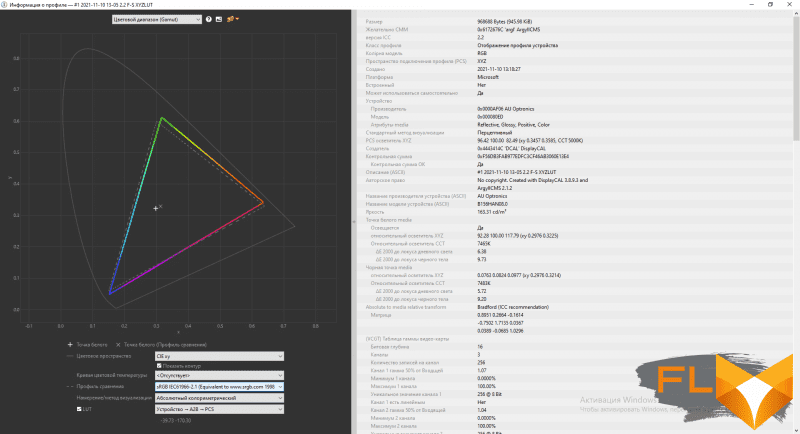
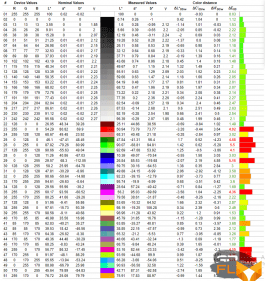 |
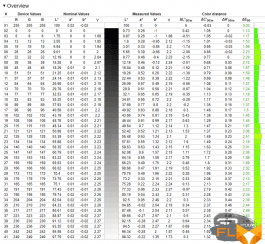 |
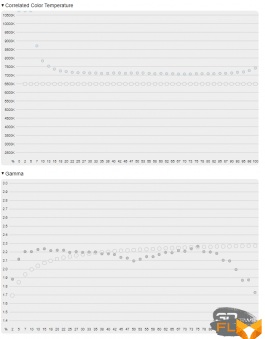 |
When describing the sound quality of the Katana GF66 11UG, one would like to use the hackneyed epithet “average”. Because when listening to music, the laptop is not surprising. Such sound quality and volume, as in the test model, will be quite enough for watching talk shows on YouTube, but in games you want, of course, more. So on January 1, along with Katana GF66 11UG, do not forget to put a good Bluetooth headset or headphones under the Christmas tree.
⇡#Efficiency of the cooling system
As always, let’s first look at the performance of a laptop in games (using Cyberpunk 2077 as an example), and then switch to resource-intensive software that uses mainly CPU processing power (using CINEBENCH R23 as an example). We tested the Katana GF66 11UG in all three operating modes: Extreme Performance, Balanced and Silent – the second mode is used by default in the laptop.
| Summary of laptop operation and setup in games (using Cyberpunk 2077 as an example) | |||
| Laptop mode | “Extreme Performance” | “Balanced“ | “Silent“ |
| Declared GPU Speed (Boost) and Memory Speed | 1290 MHz, 12 Gbps | 1290 MHz, 12 Gbps | 1290 MHz, 12 Gbps |
| GPU average frequency, MHz | 1306 | 1273 | 435 |
| Maximum noise level, dBA | 45.8 | 39 | 35 |
| Average power consumption: GPU, W | 80 | 80 | 35 |
| Average Power Consumption: CPU W | 45 | 35 | 20 |
| HP temperature: average, °C | 79 | 84 | 61 |
| GPU temperature: maximum, °C | 80 | 85 | 62 |
| CPU temperature: average, °C | 87 | 83 | 71 |
| CPU temperature: maximum, °C | 93 | 89 | 92 |
| Performance | |||
| 3DMark Time Spy, points | 8718 | 8323 | 2054 |
| 3DMark Fire Strike scores | 19720 | 18913 | 4733 |
| Unigine Superposition, 1080p Extreme, points | 5537 | 5511 | 1273 |
|
Extreme Performance Mode |
Balanced mode |
Silent mode |
Notebook case heats up (games, Extreme performance mode)
All three modes of operation of the laptop are noticeably different from each other. The Extreme Performance preset forces the Katana to run at peak performance, as can be seen from the power consumption of the CPU and GPU. At the same time, the laptop is quite noisy, providing generally quite acceptable CPU and GPU temperatures for this class of devices.
In the “Balanced” mode, the laptop makes much less noise – its work can be considered quiet. The performance of the Katana GF66 11UG is slightly reduced when the “Balanced” mode is enabled. Yes, the frequency of the GPU has become a little lower, but in 3DMARK the outflow of points is primarily associated with a decrease in the frequency of the Core i7-11800H. Here the difference is on average 4%. But in the Unigine Superposition program, it is reduced to only 0.5%, since this graphic test practically does not load the central processor. In my opinion, “Balanced” is the optimal mode for using the Katana GF66 11UG in games.
The “Silent” preset really reduces the volume of the laptop’s cooling system to a very low level: “Katana” is not silent, but very quiet even in games. True, such a result is achieved due to a radical reduction in the power consumption of the system and the frequencies of the main chips. In this mode, you are unlikely to be able to play modern games with a comfortable FPS. It is designed more for everyday non-demanding tasks such as surfing the web and watching videos.
As always, in CPU-only tasks, MSI’s “Extreme Performance” mode runs at maximum power, limited only by the efficiency of its cooling system. We can see that the PL1 and PL2 modes for the Core i7-11800H are unlocked. That is why the CPU gets very hot when performing resource-intensive tasks, and its real power consumption in CINEBENCH R23 and other resource-intensive tasks seriously exceeds the passport value of 45 watts.
In the “Balanced” mode, the average power consumption of the 8-core is below the nominal TDP value – in the same CINEBENCH R23, the laptop became 24% slower when switching from one preset to another. Unlike games, for rendering and processing photos or videos, it is better to use the “Extreme Performance” setting, although the “Katana” is quite noisy when it is turned on.
| Summary data on the operation and configuration of a laptop in processor-dependent software (for example, CINEBENCH R23) | ||||
| “Extreme performance” |
“Balanced“ | “Silent“ | ||
| Average CPU frequency, GHz | 3.5 | 2,8 | 1.9 | |
| CPU temperature | Maximum, °C | 96 | 93 | 64 |
| Average, °C | 95 | 72 | 56 | |
| Maximum noise level, dBA | 47.8 | 37 | 35 | |
| Average CPU power consumption, W | 64 | 36 | 20 | |
| Performance (more is better), score | 11 658 | 8902 | 6 184 | |
|
Extreme Performance Mode |
Balanced mode |
Silent mode |
⇡#Performance
I’m sure you paid attention to the real performance of the laptop GPU. The maximum power consumption of the GeForce RTX 3070 used in the Katana GF66 11UG is 85 watts, but the average is 80 watts. At one time, the 80-watt versions of the GeForce GTX 10 and GeForce RTX 20 necessarily received the postscript “Max-Q”. Now a lot has changed.

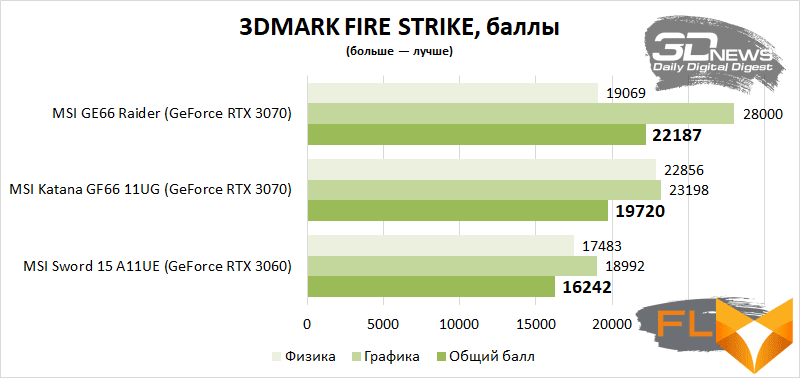

As I said, we have visited many laptops with GeForce RTX 3070 graphics – including MSI. Let’s compare the review hero with the GE66 Raider 10UG (GeForce RTX 3070 130W). And for greater clarity, the table contains test results and Sword 15 A11UE (GeForce RTX 3060 85 W). In all cases, the laptops were running in “Extreme Performance” mode. In Time Spy and Fire Strike, the Katana is 17% slower than the Raider, and 20% slower in Unigine Superposition. The difference is serious, but the compared computers, although they received a similar GPU, still belong to different weight categories, to use boxing terminology.
In games in Full HD resolution, our “lightweight” performs quite well. If you want to use ray tracing, you will have to test different settings and be sure to use DLSS.
| Laptop gaming results, FPS (more is better) | ||
| 1920 × 1080 | ||
| AVG | 1% MIN | |
| World of Tanks | 198 | 132 |
| CS: GO | 427 | 111 |
| PlayerUnknown’s Battlegrounds | 162 | 112 |
| The Witcher III: Wild Hunt | 105 | 67 |
| GTA V | 88 | 61 |
| Shadow of the Tomb Raider | 103 | 76 |
| Assassin’s Creed Valhalla | 67 | 48 |
| Red Dead Redemption 2 | 62 | 48 |
| Gears 5 | 101 | 69 |
| Metro: Exodus | 60 | 33 |
| A Total War Saga: TROY | 75 | 69 |
| Horizon Zero Dawn | 90 | 60 |
| Watch Dogs: Legion | 61 | 50 |
| Battlefield V | 110 | 73 |
| Cyberpunk 2077 | 50 | 37 |
| DOOM Eternal | 191 | 143 |
| Death Stranding | 88 | 73 |
As we have already found out, in the “Extreme Performance” mode, the Katana GF66 11UG CPU operates above the standard TDP level. On the one hand, the Core i7-11800H gets quite hot in resource-intensive applications, and the laptop’s cooling system is noisy. On the other hand, the assembly operates at its highest possible performance, as our tests show.
And in a number of tasks, not a single central processor is able to catch up and overtake the GeForce RTX 3070 – even taking into account the 85 W power limit for the GPU. So the Katana GF66 11UG is definitely a recommendation for those who need a fairly fast mobile workstation.





Below are the results of testing the laptop in the PCMARK 10 comprehensive benchmark.
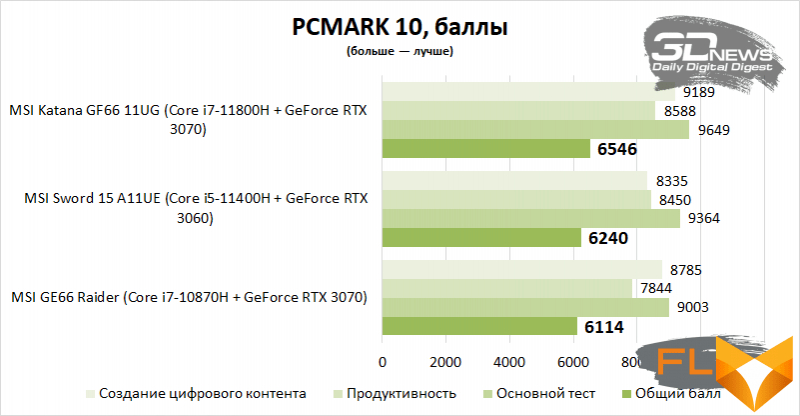
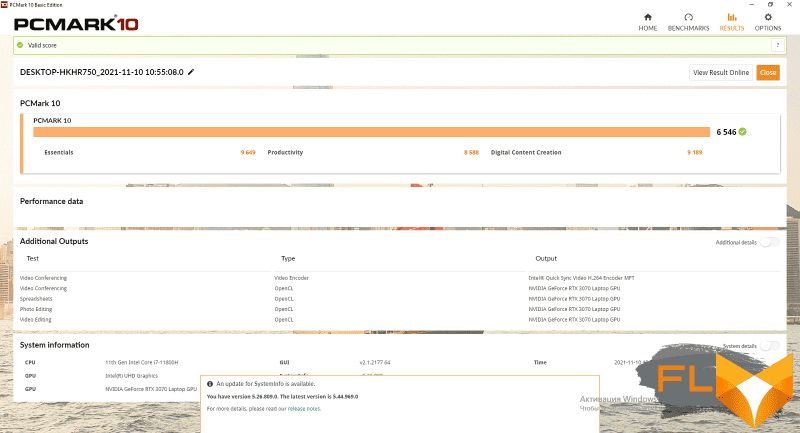
⇡#Offline work
Let’s move on to testing the battery life of the laptop. If you remember, the Sword 15 A11UE, equipped with a 53.5 Wh battery, did not work for four hours on a single battery charge under the same conditions. Katana uses the same platform, but the test version of the laptop comes with a 90 Wh battery. Installing a more capacious battery makes itself felt: with a screen brightness of 200 cd / m2 Katana GF66 11UG is able to work in web surfing mode for a little more than 7 hours. The result is not a record, but for a gaming laptop with a Core i7 and GeForce RTX 3070, I consider this a good indicator.
| Battery life, screen brightness 200cd/m2 | |
| Web | 7 hours 11 minutes |
| View video | 6 hours 56 minutes |
⇡#Conclusions
The tested laptop is very similar to the Sword 15 A11UE, which we introduced you to at the end of this summer. Laptops have similar pros and cons. “Katana” received a high-quality body – even if it is not made of metal. It uses a pretty good and fast IPS-matrix. In “Balanced” mode, the laptop is not very noisy. At the same time, its performance in games when switching the main modes drops slightly. Personally, I am impressed that the Katana GF66 11UG can be upgraded without any problems over time – everything is in order with the upgrade capabilities of the laptop. Good laptop and battery life.
Perhaps the Katana GF66 11UG can only be criticized for using a low-power version of the GPU. As we have already found out, the difference in performance compared to faster counterparts with the GeForce RTX 3070 reaches 20% in some graphics applications. However, it is worth considering that the hero of the review belongs to the initial class of such devices. Laptops with powerful versions of this graphics usually cost much more.
”
FAQ
What is the MSI Katana GF66 11UG Gaming Laptop?
The MSI Katana GF66 11UG Gaming Laptop is a high-performance gaming laptop that comes with a 15.6-inch FHD display, Intel Core i7-11800H processor, 16GB DDR4 RAM, 512GB SSD storage, NVIDIA GeForce RTX 3070 graphics card, and Windows 10 operating system.
How much does the MSI Katana GF66 11UG Gaming Laptop cost?
The MSI Katana GF66 11UG Gaming Laptop is priced at around $1600.
What are the specifications of the MSI Katana GF66 11UG Gaming Laptop?
The MSI Katana GF66 11UG Gaming Laptop comes with a 15.6-inch FHD display, Intel Core i7-11800H processor, 16GB DDR4 RAM, 512GB SSD storage, NVIDIA GeForce RTX 3070 graphics card, Windows 10 operating system, RGB backlit keyboard, Wi-Fi 6, Bluetooth 5.2, and a cooling system.
Can the MSI Katana GF66 11UG Gaming Laptop handle heavy gaming?
Yes, the MSI Katana GF66 11UG Gaming Laptop is designed for heavy gaming and can handle most modern games with ease.
What is the battery life of the MSI Katana GF66 11UG Gaming Laptop?
The MSI Katana GF66 11UG Gaming Laptop comes with a 53Wh battery that can provide up to 6 hours of battery life on a single charge.
What is the display size and resolution of the MSI Katana GF66 11UG Gaming Laptop?
The MSI Katana GF66 11UG Gaming Laptop comes with a 15.6-inch FHD display with a resolution of 1920×1080 pixels.
What operating system does the MSI Katana GF66 11UG Gaming Laptop use?
The MSI Katana GF66 11UG Gaming Laptop comes with the Windows 10 operating system.
How much storage does the MSI Katana GF66 11UG Gaming Laptop have?
The MSI Katana GF66 11UG Gaming Laptop comes with 512GB SSD storage.
Can the storage on the MSI Katana GF66 11UG Gaming Laptop be expanded?
Yes, the storage on the MSI Katana GF66 11UG Gaming Laptop can be expanded by using an external hard drive or upgrading the SSD storage.
How much RAM does the MSI Katana GF66 11UG Gaming Laptop have?
The MSI Katana GF66 11UG Gaming Laptop comes with 16GB DDR4 RAM.
Is the MSI Katana GF66 11UG Gaming Laptop lightweight and portable?
Yes, the MSI Katana GF66 11UG Gaming Laptop is lightweight and portable, weighing only 2.1kg and measuring 21.7mm in thickness.
What ports are available on the MSI Katana GF66 11UG Gaming Laptop?
The MSI Katana GF66 11UG Gaming Laptop comes with three USB 3.2 Gen 1 Type-A ports, one USB 3.2 Gen 2 Type-C port, one HDMI port, one mini DisplayPort, one RJ45 LAN port, and a 3.5mm audio jack.
Does the MSI Katana GF66 11UG Gaming Laptop have a webcam?
Yes, the MSI Katana GF66 11UG Gaming Laptop comes with a 720p HD camera.
Is the MSI Katana GF66 11UG Gaming Laptop good for video conferencing?
The MSI Katana GF66 11UG Gaming Laptop is good for video conferencing as it comes with a 720p HD camera and dual digital microphones that provide clear audio and video output.
Does the MSI Katana GF66 11UG Gaming Laptop have a backlit keyboard?
Yes, the MSI Katana GF66 11UG Gaming Laptop comes with a RGB backlit keyboard.
How fast is the processor in the MSI Katana GF66 11UG Gaming Laptop?
The MSI Katana GF66 11UG Gaming Laptop comes with an Intel Core i7-11800H processor that has a base clock speed of 2.3GHz and can go up to 4.6GHz.
Can the MSI Katana GF66 11UG Gaming Laptop handle multitasking?
Yes, the MSI Katana GF66 11UG Gaming Laptop can handle multitasking with ease, thanks to its 16GB DDR4 RAM and Intel Core i7 processor.
What is the graphics card in the MSI Katana GF66 11UG Gaming Laptop?
The MSI Katana GF66 11UG Gaming Laptop comes with an NVIDIA GeForce RTX 3070 graphics card with 8GB GDDR6 VRAM.
Is the MSI Katana GF66 11UG Gaming Laptop durable?
The MSI Katana GF66 11UG Gaming Laptop is built with a metallic body and is designed to be durable and sturdy.
What is the warranty for the MSI Katana GF66 11UG Gaming Laptop?
The MSI Katana GF66 11UG Gaming Laptop comes with a one-year limited warranty.
“

